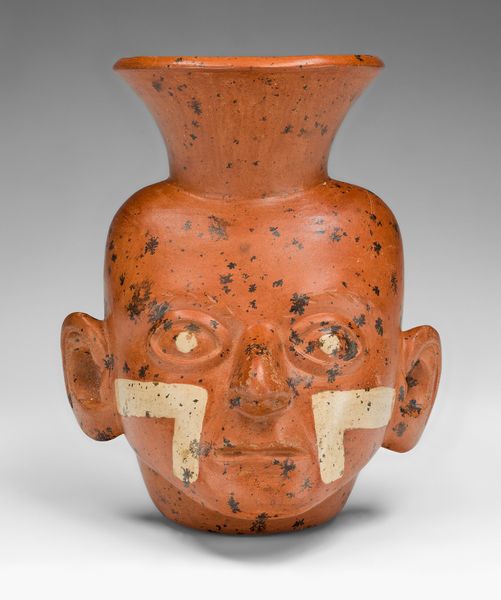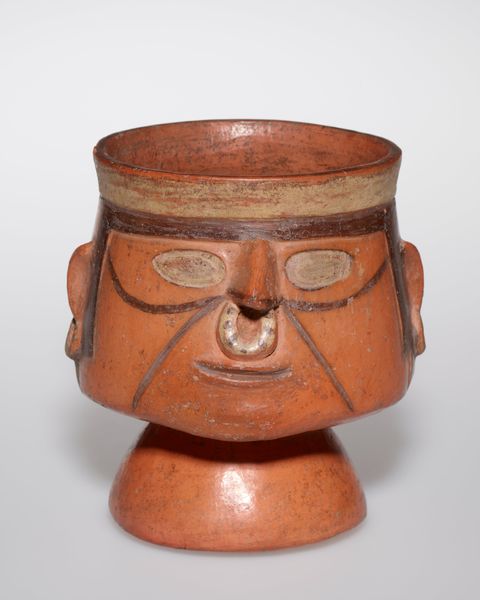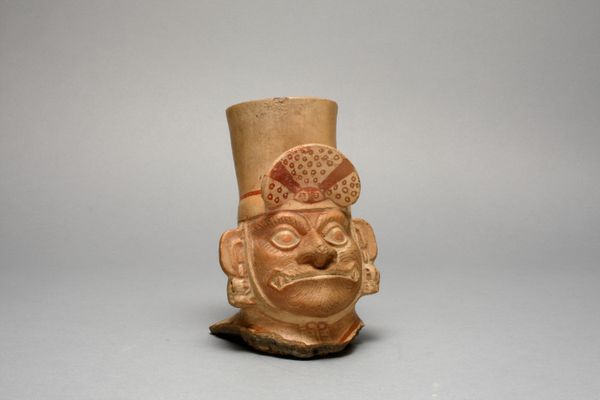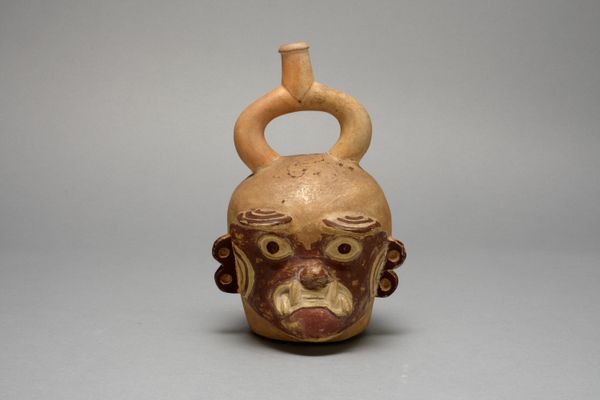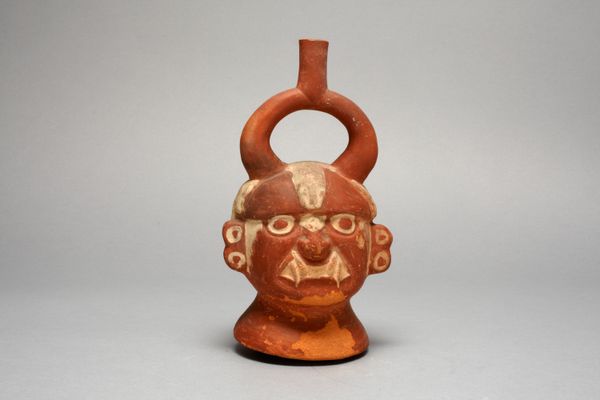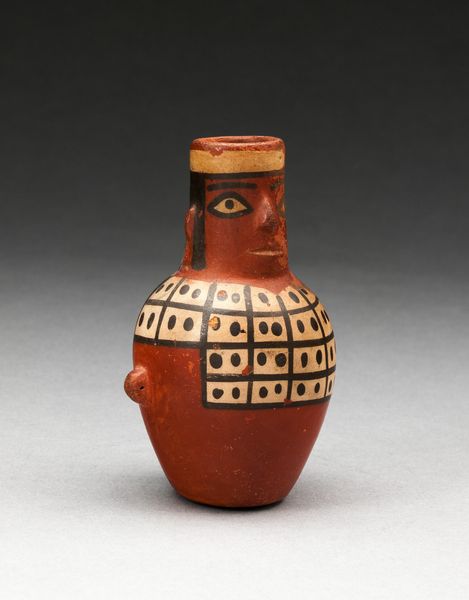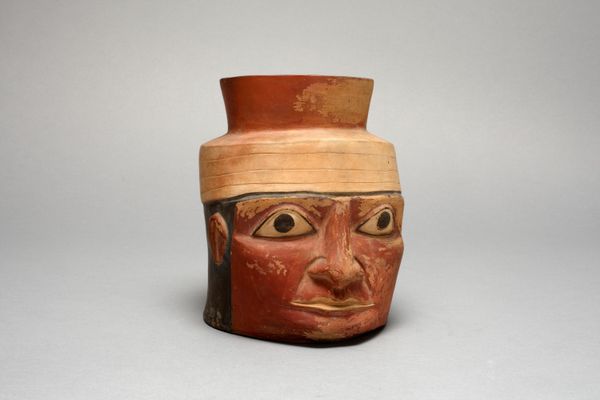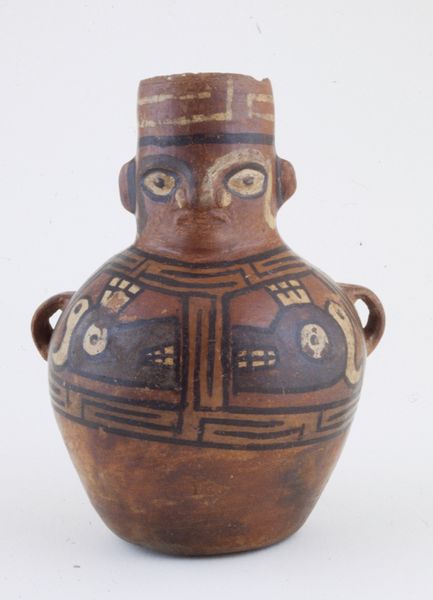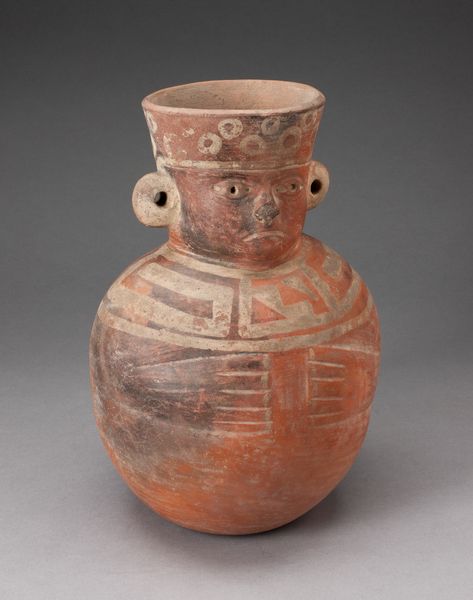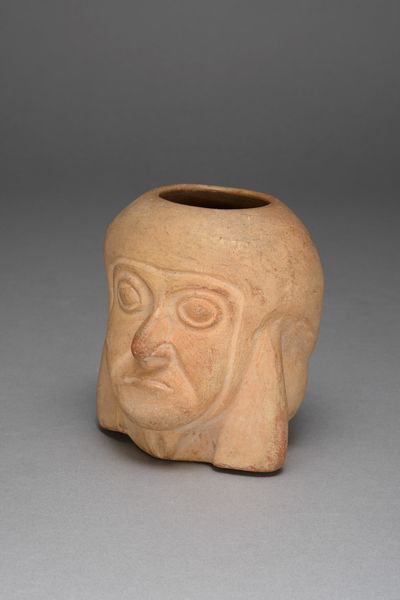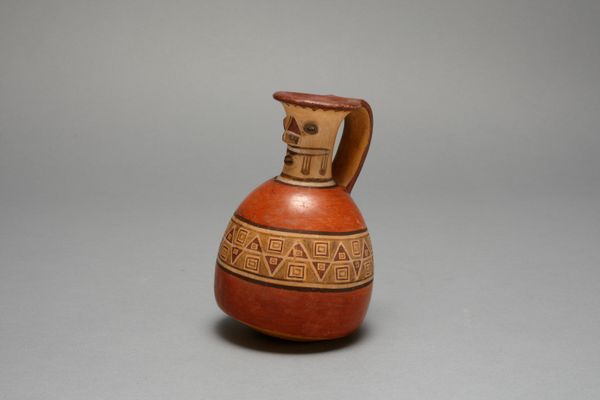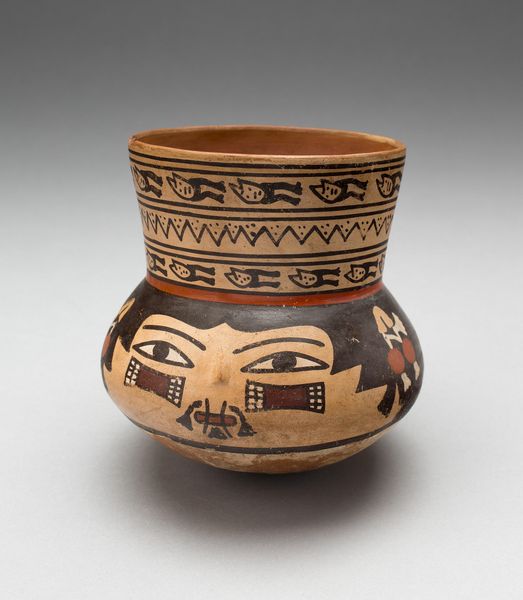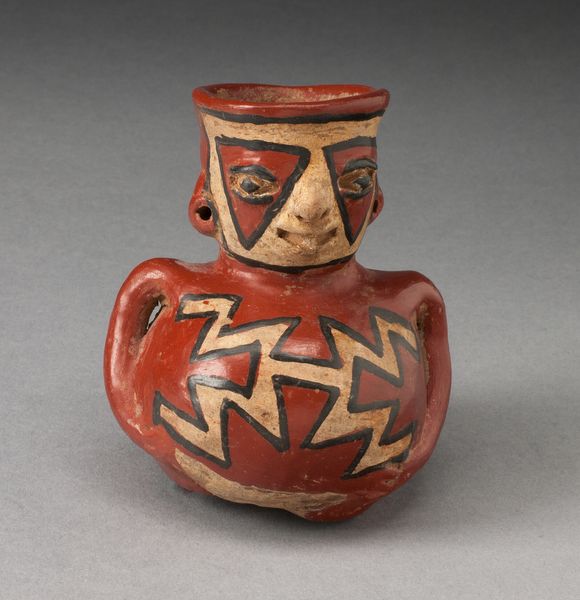
ceramic, terracotta
#
portrait
#
ceramic
#
figuration
#
ceramic
#
terracotta
#
indigenous-americas
Dimensions: 15.2 × 12.4 cm (6 × 4 7/8 in.)
Copyright: Public Domain
Curator: Right, let’s dive in. We are looking at an Inca drinking vessel in the form of a head. Its creation is estimated to be sometime between 1450 and 1532, so it is an incredibly old object currently residing here at The Art Institute of Chicago. Editor: My first thought? This little guy has seen things. So much history concentrated in that fixed ceramic stare. He almost feels like a disgruntled water cooler everyone vents to, or am I completely off base here? Curator: Not at all! It's crucial to understand these objects not just as aesthetic forms but as cultural artifacts deeply intertwined with sociopolitical contexts. This piece could very well have been part of rituals. These vessels often depict powerful individuals. We can interpret it as a commentary on power dynamics and perhaps even resistance. Editor: I can get behind that interpretation; power seeping up through the terra cotta itself. I love the way that zigzag pattern at the top mimics a crown. But, like, a tribal futurist crown if that makes any sense. I mean that color palette of creams, whites, and umber makes it look like he could start dispensing wisdom or funky punch. Curator: Exactly, this vessel offers us insight into Indigenous American aesthetic sensibilities. The ceramic sculpture’s earth tones, simplified yet expressive features are also telling details of this culture, which used natural resources like clay as key modes of representing itself, documenting its identity, its cosmology, its place within a very specific geopolitical reality. Editor: He's simple, sturdy. Gives you the impression that you can connect and almost trust. Curator: Trust is exactly what an artist might intend when designing an image, what a leader inspires when he holds office. Considering how the Incas saw portraiture itself within their practices, how this cup likely carried symbolic liquids at gatherings—what stories were actually being poured forth and passed around with it? Editor: Food for thought, so to speak! It really makes you wonder how many lips this little jug has met, or maybe what it’d say if it could spill its own secrets, huh? Curator: Absolutely, and considering the scholarship dedicated to indigenous voices and interpretations within contemporary museums, such a question has real academic weight. Editor: Thanks for widening my perception once again! Curator: The pleasure’s all mine.
Comments
No comments
Be the first to comment and join the conversation on the ultimate creative platform.
